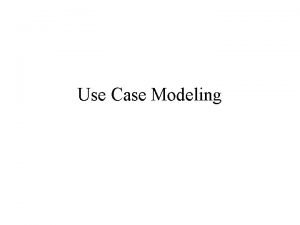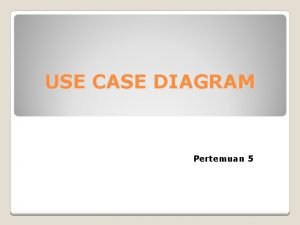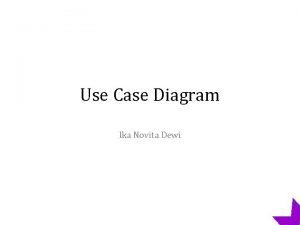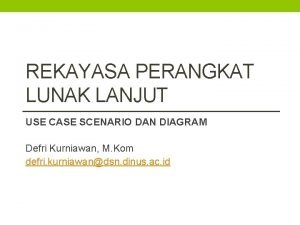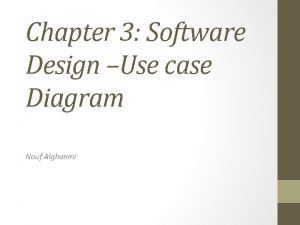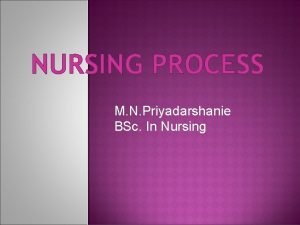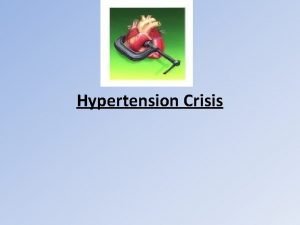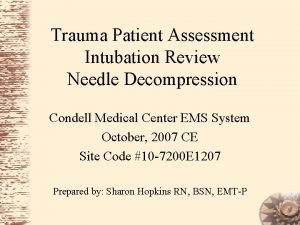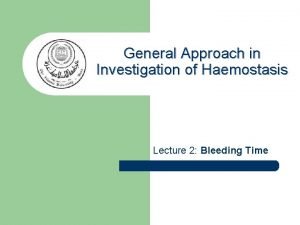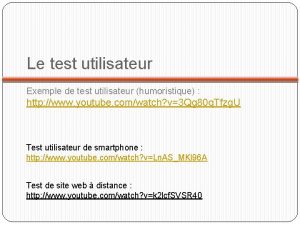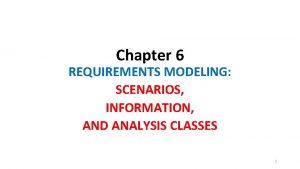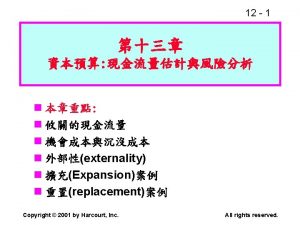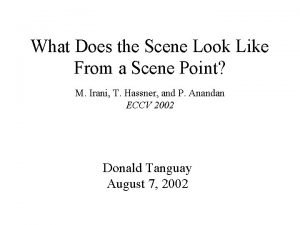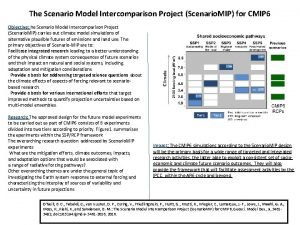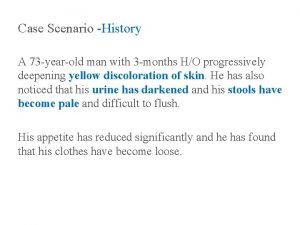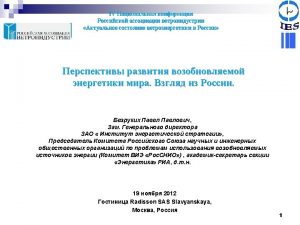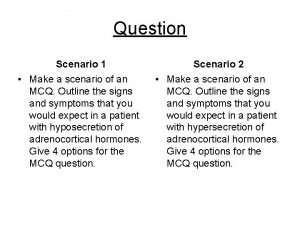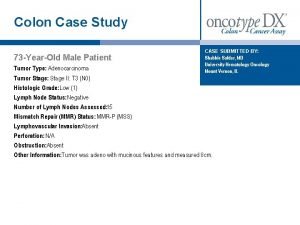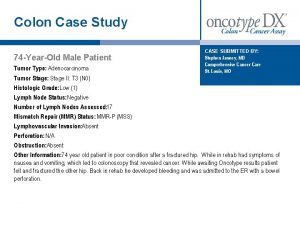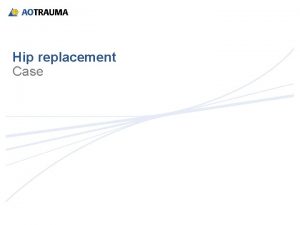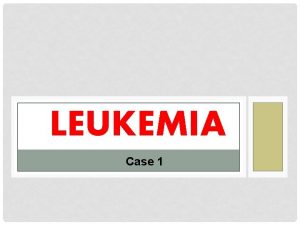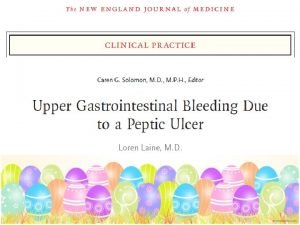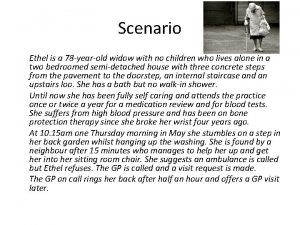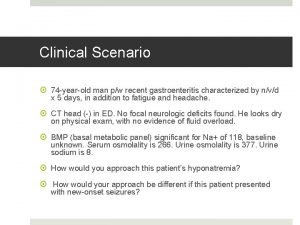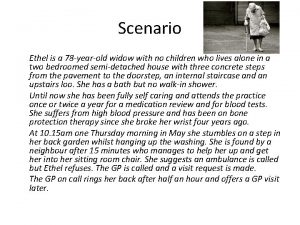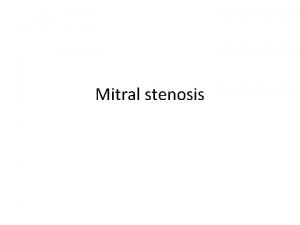CASE SCENARIO History A 50 yearold civil services































- Slides: 31

CASE SCENARIO History A 50 -year-old civil services officer presents to the A&E with 2 days h/o vomiting and epigastric pain which radiates through to the back. He is not on any regular medication, but admits to drinking alcohol everyday for the last five years.

CASE SCENARIO Examination The patient is unable to lie flat for the examination. His blood pressure is 150/80 mm. Hg and he has a pulse rate of 120/min. Palpation of his abdomen reveals tenderness in the epigastrium. The abdomen is not distended and he has normal bowel sounds. Rectal examination is unremarkable.

CASE SCENARIO Investigations Serum amylase WBC 4672 IU/d. L 13. 3 x 109 /L 0 -100 IU/d. L 4. 0 -11. 0 x 109/L

QUESTIONS • What is the most likely diagnosis? • Which important differential diagnosis should be excluded? • How will you grade the severity of the condition? • What are its causes? • What are the other causes of the elevated serum marker of this condition? • How will you manage the condition?

Faisal Ghani Siddiqui MBBS; FCPS (General Surgery); PGDIP-BIOETHICS; MCPS-HPE; FICLS; (MHPE) ACUTE PANCREATITIS



Exocrine Parenchymal Cells of Pancreas (90%) Endocrine (10%) Islets of Langerhans (B, A, D cells)

B insulin Endocrine Cells of Pancreas A glucagon D somatostatin

PANCREATITIS -inflammation of the gland parenchyma of the pancreas

Acute Pancreatitis Chronic

WHAT IS ACUTE PANCREATITIS? • Acute inflammation of pancreatic parenchyma • Presents as an emergency • With abdominal pain and vomiting • Associated raised pancreatic enzyme levels in blood or urine

Injury to acinar cells Impairment of secretion of zymogen granules Premature activation of the enzymes; Autodigestion Local inflammation Systemic complications

ACUTE PANCREATITIS -AETIOLOGY Gallstones Alcohol Viral infections: mumps Abdominal trauma: bicycle handle injury Iatrogenic: ERCP Drugs: steroids; azathioprine Hypocalcemia Pancreas divisum Idiopathic 80%

Mild Interstitial edema Categories of Acute Pancreatitis Minimal organ dysfunction Low mortality rate (1%) Severe Pancreatic necrosis Severe SIRS / MOF High mortality rate (20 -50%)

ACUTE PANCREATITIS –CLINICAL FEATURES • Pain • Vomiting • Tachypnea, tachycardia, shock • Fever • Jaundice • Abdominal distension • Grey Turner / Cullen’s sign

Cullen’s sign Grey-Turner’s sign

ACUTE PANCREATITIS –INVESTIGATIONS • Laboratory investigations • Serum amylase / lipase levels • Radiological • Plain X ray abdomen (Ileus; calcifications) • X-ray chest (pneumoperitoneum; pleural effusion)) • Ultrasound (gallstones; pancreatic edema) • Contrast enhanced CT (Pancreatic necrosis)

OTHER CAUSES OF HYPERAMYLASEMIA • Perforated peptic ulcer • Mesenteric infarction • Acute cholecystitis • Generalized peritonitis • Intestinal obstruction • Ruptured ectopic pregnancy • Diabetic ketoacidosis • Bowel perforation • Renal failure • Ruptured aortic aneurysm

Colon cut-off sign

Sentinel loop

Pleural effusion

ASSESSMENT OF SEVERITY –SCORING SYSTEMS • Ranson’s criteriae • Used to grade severity • Helps decide whether patients should be managed • on ward, or • in HDU or intensive care

RANSON’S CRITERIAE On admission: • Age: >55 years • WBC count: >16 x 109 L • LDH: >600 IU/L • AST: >120 IU/L • Glucose: >10 mmol/L • Fluid sequestration: >6 L Estimates on mortality are based on the number of points scored: 0– 2: =2 per cent; 3– 4: =15 per cent; 5– 6: =40 per cent; >7: =100 per cent Within 48 h: • Hematocrit fall: >10 per cent • Urea rise: >0. 9 mmol/L • Calcium: >2 mmol/L • p. O 2: >60 mm. Hg • Base deficit: >4

ASSESSMENT OF SEVERITY –OTHER SCORING SYSTEMS • Glasgow • APACHE-II

ACUTE PANCREATITIS -MANAGEMENT • NPO • Analgesics • Fluid resuscitation • Supplement oxygen • Antibiotics • Continuous monitoring for systemic / local complications • Treat the cause

ACUTE PANCREATITIS - COMPLICATIONS Local Systemic • Sterile pancreatic necrosis • Infective pancreatic necrosis • Pancreatic abscess • Pancreatic pseudocyst • Abscess formation • Splenic / portal vein thrombosis • Renal failure • Respiratory failure • Cardiac failure • Septic shock • Multi-organ failure and death

CASE SCENARIO History A 50 -year-old civil services officer presents to the A&E with 2 days h/o vomiting and epigastric pain which radiates through to the back. He is not on any regular medication, but admits to drinking alcohol everyday for the last five years.

CASE SCENARIO Examination The patient is unable to lie flat for the examination. His blood pressure is 150/80 mm. Hg and he has a pulse rate of 120/min. Palpation of his abdomen reveals tenderness in the epigastrium. The abdomen is not distended and he has normal bowel sounds. Rectal examination is unremarkable.

CASE SCENARIO Investigations Serum amylase 4672 IU/d. L 0 -100 IU/d. L WBC 13. 3 x 109 /L 4. 0 -11. 0 x 109 /L

QUESTIONS • What is the most likely diagnosis? • Which important differential diagnosis should be excluded? • How will you grade the severity of the condition? • What are its causes? • What are the other causes of the elevated serum marker of this condition? • How will you manage the condition?
 Use case scenario example
Use case scenario example What is use case description
What is use case description Penjelasan use case diagram
Penjelasan use case diagram Contoh use case scenario
Contoh use case scenario Contoh use case skenario
Contoh use case skenario Use case scenario example
Use case scenario example Nursing care plan case scenario
Nursing care plan case scenario Hypertensive crisis classification
Hypertensive crisis classification Waste case scenario
Waste case scenario Tension pneumothorax case scenario
Tension pneumothorax case scenario Bleeding time
Bleeding time Best worst and average case
Best worst and average case Civil rights and civil liberties webquest
Civil rights and civil liberties webquest Piecewise in real life situation
Piecewise in real life situation Example of anecdote
Example of anecdote User scenario
User scenario How to create a scenario pivot table in excel
How to create a scenario pivot table in excel Describe the scenario that led prince paris to kidnap helen
Describe the scenario that led prince paris to kidnap helen 9 line medevac scenario example
9 line medevac scenario example Tccc scenario cards
Tccc scenario cards Scenario based learning software
Scenario based learning software Bank mystery shopper
Bank mystery shopper Scénario utilisateur exemple
Scénario utilisateur exemple Scenario of cyberbullying
Scenario of cyberbullying Scenario ideas
Scenario ideas Scenario based modeling
Scenario based modeling Scenario planning workforce planning
Scenario planning workforce planning Sensitivity scenario analysis
Sensitivity scenario analysis Homography
Homography Scenariomip
Scenariomip Create a scenario summary report
Create a scenario summary report Bhushan jayarao
Bhushan jayarao
